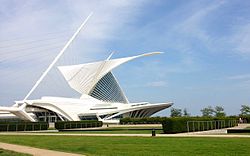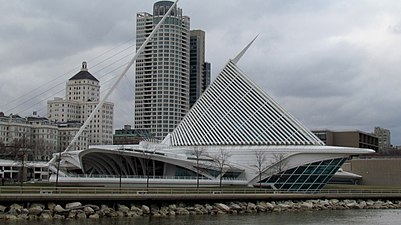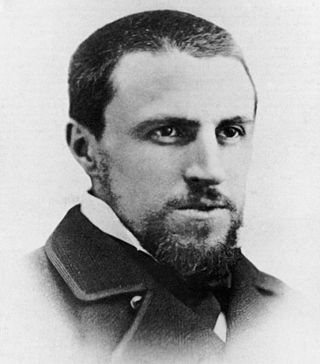
Gustave Caillebotte was a French painter who was a member and patron of the Impressionists, although he painted in a more realistic manner than many others in the group. Caillebotte was known for his early interest in photography as an art form.

Santiago Calatrava Valls is a Spanish architect, structural engineer, sculptor and painter, particularly known for his bridges supported by single leaning pylons, and his railway stations, stadiums, and museums, whose sculptural forms often resemble living organisms. His best-known works include the Olympic Sports Complex of Athens, the Milwaukee Art Museum, the Turning Torso tower in Malmö, Sweden, the World Trade Center Transportation Hub in New York City, the Auditorio de Tenerife in Santa Cruz de Tenerife, the Margaret Hunt Hill Bridge in Dallas, Texas, and his largest project, the City of Arts and Sciences and Opera House in his birthplace, Valencia. His architectural firm has offices in New York City, Doha, and Zurich.
The year 2001 in architecture involved some significant architectural events and new buildings.

Contemporary architecture is the architecture of the 21st century. No single style is dominant. Contemporary architects work in several different styles, from postmodernism, high-tech architecture and new references and interpretations of traditional architecture to highly conceptual forms and designs, resembling sculpture on an enormous scale. Some of these styles and approaches make use of very advanced technology and modern building materials, such as tube structures which allow construction of buildings that are taller, lighter and stronger than those in the 20th century, while others prioritize the use of natural and ecological materials like stone, wood and lime. One technology that is common to all forms of contemporary architecture is the use of new techniques of computer-aided design, which allow buildings to be designed and modeled on computers in three dimensions, and constructed with more precision and speed.

Brise soleil, sometimes brise-soleil, is an architectural feature of a building that reduces heat gain within that building by deflecting sunlight. The system allows low-level sun to enter a building in the mornings, evenings and during winter but cuts out direct light during summer.

The Milwaukee Institute of Art & Design (MIAD) is a private art school in Milwaukee, Wisconsin. Founded in 1974, MIAD is accredited by the Higher Learning Commission and the National Association of Schools of Art and Design. MIAD is considered the successor to the Layton School of Art, and was formerly known as the Milwaukee School for the Arts.
Alexander Chadbourne Eschweiler was an American architect with a practice in Milwaukee, Wisconsin. He designed both residences and commercial structures. His eye-catching Japonist pagoda design for filling stations for Wadham's Oil and Grease Company of Milwaukee were repeated over a hundred times, though only a very few survive. His substantial turn-of-the-20th-century residences for the Milwaukee business elite, in conservative Jacobethan or neo-Georgian idioms, have preserved their cachet in the city.
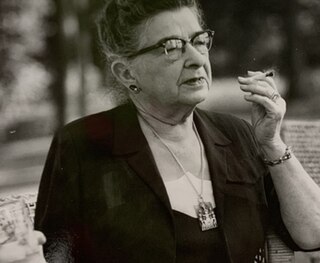
Charlotte Partridge was an artist, arts educator, community organizer and the co-founder and co-director of the Layton School of Art in Milwaukee, Wisconsin from 1920 to 1954, with her life partner Miriam Frink. They were credited with having developed a nationally accredited art school, recognized for excellence. Partridge was also a State Chair (1933-1934) and Director (1935-1939) of Wisconsin's Works Projects Administration, and published a national survey of art institutions and contemporary art for the Federal Works Agency in 1940. Partridge received a number of awards recognizing her lifetime of contributions to "the cause of art".

The Museum of Wisconsin Art is a museum that collects and exhibits contemporary and historical art from the state of Wisconsin. Its collections include rotating historical and contemporary exhibitions and educational programs. The museum's One Gallery features solo shows of contemporary Wisconsin artists and arts organizations several times each year.

Lake Park, a mile-long park on a bluff above Lake Michigan in Milwaukee, Wisconsin, is an urban park covering 138.1-acre (559,000 m2).

The Calling is a public artwork by American artist Mark di Suvero located in O'Donnell Park, which is on the lakefront in Milwaukee, Wisconsin, United States. The artwork was made in 1981-82 from steel I-beams painted an orange-red color. It measures 40 ft (12 m) in height, and it sits at the end of Wisconsin Avenue in front of the footbridge that leads to the Milwaukee Art Museum.

The Reiman Pedestrian Bridge is a cable-stayed footbridge in downtown Milwaukee, Wisconsin that spans Lincoln Memorial Drive. It connects the Milwaukee Art Museum on the lakeshore to the east side of the downtown's central business district by way of O'Donnell Park, a multi-use park complex. The bridge was built in 2001 as part of a major expansion to the museum that included the Quadracci Pavilion. Both the bridge and Quadracci Pavilion were designed by Santiago Calatrava, the first structures designed by him to be built in the United States.

Lynden Sculpture Garden is a 40-acre outdoor sculpture park located at 2145 West Brown Deer Road in Milwaukee, Wisconsin in Milwaukee County. Formerly the estate of Harry Lynde Bradley and Margaret Blakney Bradley, Lynden is home to the collection of more than 50 monumental sculptures collected by Margaret Bradley between 1962 and 1978. The collection features works by Alexander Archipenko, Henry Moore, Barbara Hepworth, Clement Meadmore, Marta Pan, Tony Smith, Mark di Suvero and others sited across 40 acres of park, lake and woodland.

Frederick Layton was an English-American businessman, philanthropist and art collector. He immigrated to Milwaukee, Wisconsin Territory, with his father in 1843, when the city was still a pioneer village. He played a major role in the creation of Milwaukee's meat packing industry and established a trans-Atlantic business exporting his meat products to Great Britain. During his lifetime, he made 99 trips across the Atlantic pursuing business interests and collecting fine art in London and the other capitals of Europe. Throughout his life, he consistently donated his money to support local charities and Milwaukee's art community. In 1888, he built the Layton Art Gallery on the corner of Mason and Jefferson streets in Milwaukee, one of the nation's earliest single-patron public art galleries. By creating an endowment for the gallery, and with donations from the gallery trustees and friends, Layton was personally able to purchase over 200 works of art for the gallery before dying at the age of 92. Though the original building of the Layton Art Gallery no longer exists, many of Mr. Layton's purchases comprise the founding, core collection of early European and American art at the Milwaukee Art Museum. The Layton Art Collection Board of Trustees still supports and maintains the historic collection in collaboration with Milwaukee Art Museum staff and volunteers.
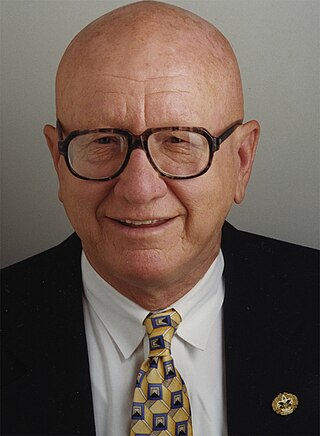
Richard R. Pieper, Sr., is an American entrepreneur and philanthropist. He is currently Chairman Emeritus for PPC Partners, Inc. headquartered in Milwaukee, Wisconsin.
Elizabeth Quadracci, also known as Betty Ewens Quadracci, founded the Sussex, Wisconsin based Quad/Graphics with her husband, Harry V. Quadracci and was the president of Quad Creative, the company's graphic design unit.
Harry V. Quadracci founded Quad/Graphics with his wife Elizabeth Quadracci.

John Shimon and Julie Lindemann are American artists who worked together as the collaborative duo J. Shimon & J. Lindemann. Shimon continues to work and teach at Lawrence University. They were born in Manitowoc, Wisconsin, and are best known for their photographs about human existence in the Midwest made using antiquarian photographic processes.

Boating on the Yerres is a 1877 painting by French impressionist and realist painter Gustave Caillebotte.

Fred Berman, born Fred Jean Berman, was a Jewish American abstract artist.
